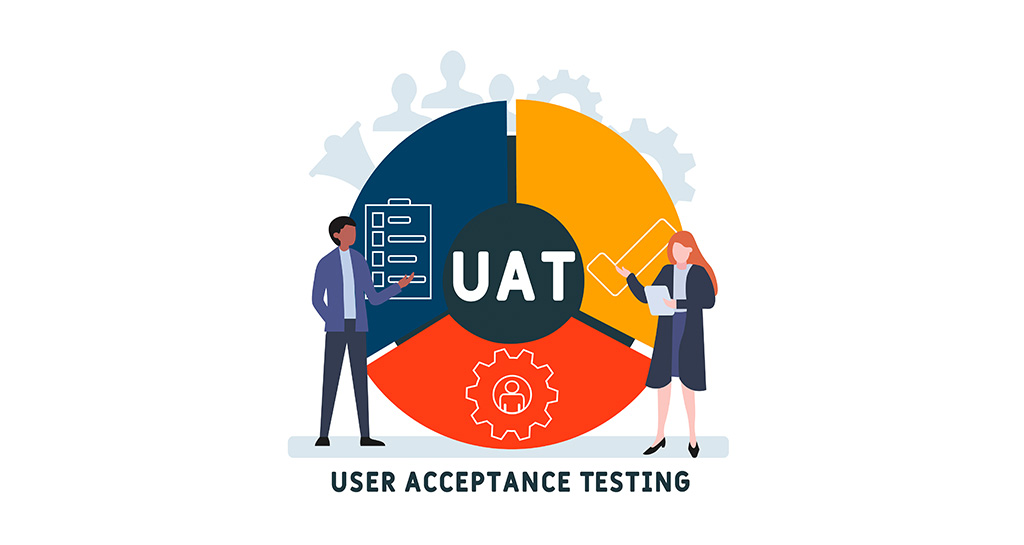
You may think of the User Acceptance Testing phase as little more than the final step in a single software production job. If that’s the case, you’re missing a big opportunity to create a connection with the client that facilitates a more successful build and can lead to an enduring and profitable business relationship.
As a Production Lead at BDO Digital, I’m responsible for ensuring our building and QA systems operate as efficiently and error-free as possible. There are many formal steps in the marketing campaign production process to make that happen, including, of course, User Acceptance Testing. UAT is the process of validating that your project really delivers what the business end user has requested. Often thought of as a simple checklist of functionality in the software world, there is even more value buried within the conversations you engage in to create that checklist.
In the marketing automation world, the creation of the UAT checklist involves a bit more nuance than the traditional software UAT checklist. If you’re a consultant, there are also a lot of pain points where responsibility isn’t clearly held by either side. This means your UAT conversation has some grey areas to explore who is responsible for which steps and truly get in sync with your client’s goals, which can provide opportunities to deepen the business relationship. These branching UAT conversations can help improve the development process in these other important areas:
- Gives you a more nuanced understanding of the client’s real intentions and needs.
- Speeds up development by better defining developer and client responsibilities.
- Reduces unnecessary work and duplication of effort.
- Promotes root-cause analysis if problems arise, helping to avoid finger-pointing.
Questions To Ask
So, what does a UAT conversation look like? The end goal should be to create a concrete checklist, but the process of making that list involves questions that can lead to a lot of in-depth, relationship-building conversations. These conversations promote alignment — and they’re also where most of the gold is buried.
- Clearly define responsibilities. Do you want us to check for branding adherence? Do you want us to vet your segmentation? These kinds of questions save time and effort as tasks are de-duplicated — and can save a lot of confusion if something goes wrong.
- Check for any high-priority items. Were there any mistakes that snuck through in the past? Is there a stakeholder who is a stickler for grammar and expects us to correct any errors? Check to see if there are high-visibility or high-priority items that must be 100% verified.
- Review the end-to-end production process. Is your client aware of your internal QA process? Is the process communicated clearly and fully baked? Are you aware of how their drafting and QA process works? Highlighting your process allows them to point at duplicated or missing efforts, again saving time and confusion.
- Look for opportunities for improvement. Is there anything we’ve missed that we should be aware of? This may be an uncomfortable question, but allowing time for the client to air out any problems they’re having can help in the long run. It’s much better to know and react than be in the dark until it’s too late. Most likely, addressing these issues can help both sides.
Promote a Pragmatic Relationship
Devoting more time to a broader UAT conversation can save a lot of time and trouble. As you know, the systems we build for our clients can comprise an enormous quantity of details, data and assets. For example, I frequently work on the development of email campaigns that leverage a variety of client content. As a production team, we typically assume every detail must be executed perfectly. However, not every element is of equal importance. We may get hung up on a specific detail, such as making sure a font color is a specific hex value to be in accordance with a new branding decision. Without having the UAT conversation, it’s possible for us to spend significant time on that detail without knowing whether this is something the client is happy to own and verify on their side. Having the UAT conversation serves to uncover this type of nuance, saving both teams significant time, money and effort.
These may seem like small details, but nobody wants to spend time or effort on unnecessary tasks. While clearing up these day-to-day nuances is great, the process of figuring them out opens the conversation up to uncover the client’s true intentions and needs. This lays the groundwork to develop a relationship based on mutual buy-in and collaboration.
Check the Ego
As consultants, we naturally want to present ourselves as trusted advisors — competent, experienced, the one with all the answers. But there’s a danger in walking into the client’s office and acting like you’re the sole arbiter of how everything should be done. Every client is different, and there are details you simply can’t know without getting their input. That means we need to be comfortable with dropping the guise of “all-knowing expert” a little and spending some time in conversation with the client — listening, not just leading.
Even if you have advanced knowledge and experience, it’s still possible to miss the mark if you don’t have a deep grasp of what the client needs. If you’ve pushed through your plan without asking for input, it’s also easier for the client to blame you for issues that arise. The relationship you forge with the client during the UAT conversation can help to skip the blame game entirely and put you in a position to focus on RCA and how to address challenges, leading to better results and a more pleasant environment for everyone involved.
Read the Room
There are different ways to have the UAT conversation — the more open and vulnerable approach, and the approach that’s more guarded and business-like. Should you have open, unguarded UAT conversations with every client? As valuable as it can be, the answer to that question is “No.” Every client is different: Customers at smaller or less mature businesses — including startups — may look to you for advice and guidance as well as core production capability. For them, the UAT conversation is a two-way learning process. As you listen and try to help the client figure out their marketing approach, you can simultaneously introduce them to concepts like ticketing systems, SLAs and building process fundamentals. On the other hand, clients at more mature organizations, with years of experience in the sort of systems you’re building, are often more likely to know exactly what they need from your team.
A “guard-down” UAT conversation should be approached professionally by coupling the vulnerability and open-ended questions with knowledge and practical experience. If you don’t have the skills to back up your boldness, you could end up damaging relationships with your wiser, more established clients. Knowing this difference is something you, as the voice of experience in the room, must feel out.
The UAT conversation is an important tool to have in your toolbox, but it can also be a launchpad to future contracts and a long relationship with a client. It can contribute to the success of your projects, but more importantly, it also lets us see through the client’s eyes and empathize with their challenges. Once we do that and become truly aligned with the client’s goals, we can use our knowledge and experience to see opportunities to expand and build systems that they might not see, paving the way for additional business and a growing relationship.
Convinced? Give it a try by initiating a conversation with one of your more personable accounts. Find out if you are duplicating efforts — or if there are any goals outside of the regular scope of your day-to-day that you can help them tackle. Have a human conversation where you reconnect with your client and make sure you’re aligned with their wants with regards to the technical aspects of your production. Most importantly, allow that conversation to branch out so it can shed more light on their greater goals. It’s alright to let your guard down and hang up your “expert” hat to ask some obvious questions that spark some interesting conversations. An open-ended question like “Why is it important that we do things this way?” or “Do you want us to check for spelling or grammar mistakes?”, if followed up correctly, can yield some important context into why the client works the way they do. This context allows you to provide better service and connect with the customer — and it just might lead to a more efficient process and more sales opportunities as you identify gaps in your current business relationship.

As a Production Lead at BDO Digital, Ryan Carver has worked with a wide range of clients, from one-man marketing groups to large, enterprise-level customers. He oversees the day-to-day operations to help them uncover the most value from their automated email marketing systems.
The post Most Important Step in the User Acceptance Testing Process — The UAT Conversation appeared first on DemandGen.





















